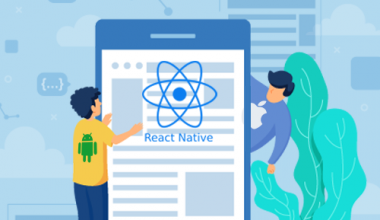Smartphone, you might have considered yourself a member of the leading edge of wireless services users. Then you started hearing ads and reading stories about something called “4G,” and perhaps began wondering…what is it, where is it, can I get it, and do I want it?
Here’s a quick list that explains what 4G is, what it can do, why it’s the future of wireless communications, and where (and when) you might be able to get it.
- What does “4G” mean, anyway?4G is a marketing term that service providers are using to describe the “fourth generation” of wireless services. Such services may use different underlying technologies, depending on the provider, but they typically offer between four and ten times the performance of “3G” networks.
- What are the technologies behind 4G services?The two main technologies are WiMax and Long Term Evolution (LTE). WiMax is a standard developed by the IEEE, the Institute of Electrical and Electronics Engineers; Development of the LTE standard is led by the 3GPP, an industry body for providers that use GSM, the current leading technology for cellular communications. Both WiMax and LTE use advanced antenna technology to improve reception and performance. However, the technologies rely on different types of wireless spectrum.
- How fast is 4G compared to 3G?WiMax providers today are offering contracts that advertise download speeds of between 2 megabits per second and 6 mbps, with peak speeds of 10 mbps and more. Verizon, which will launch LTE networks in the United States later this year, is expecting to offer services with download speeds in the 5 mbps to 12 mbps range. Most 3G data systems today deliver speeds of between 400 kilobits per second (that is, 0.4 mbps) and 1.5 mbps.
- Why should I want 4G?4G’s faster download speeds and better overall data performance will significantly improve the performance of demanding applications such as streaming video, videoconferencing, and networked gaming. You may also be able to replace your home DSL or cable modem service with a 4G service that you can use both at home and on the road.
- Are 4G services available now?Yes, in some places. In the United States, the partnership of Clearwire and Sprint currently offers WiMax-based services in 28 cities–among them, Atlanta, Charlotte, Chicago, Dallas, Las Vegas, Philadelphia, Portland (Oregon), and Seattle. Clearwire and Sprint plan to add Los Angeles, New York, and San Francisco to this list in 2010.
On the LTE side, Verizon is the most aggressive of the U.S. providers, with plans to launch commercial services in 25 to 30 as-yet unnamed markets before the end of 2010; AT&T plans to follow with LTE in 2011. Internationally, WiMax services are already in use in many countries, including Japan, Korea, and Russia; and one commercial LTE network is running in Sweden.
- What providers other than Verizon and AT&T plan to offer LTE in the United States?In March, MetroPCS announced plans to launch LTE services in Las Vegas before the end of this year, using a dual-mode 3G/LTE phone made by Samsung. T-Mobile is expected to launch LTE services sometime in the future, but it has not specified a timeframe for deployment.
- What are the cost advantages of 4G versus 3G?Right now, the Clearwire/Sprint plans typically provide true “unlimited” data usage, whereas virtually all 3G cellular plans impose extra charges for downloading more than 5 gigabytes of data per month. Plans from Clearwire and its reseller partners (which include Comcast and Time-Warner Cable) are typically $10 to $20 per month cheaper than the standard $60 per month 3G cellular data plan, too. Verizon has not announced LTE pricing.
- Can I get 4G on the 3G phone or USB modem that I have now?No. The 4G networks are designed to run at different frequencies than the ones current cellular services use, so you’ll need new radio chips tuned to the 4G frequencies.
- Does 4G support voice calls?Not in any current implementation, other than Voice over IP applications like Skype or Vonage. Most early 4G phones will be “hybrid” devices that include a 3G chip to handle voice calls.
- Are any 4G phones available now?As of April 2010, the only 4G phone announced for U.S. markets is Sprint’s HTC EVO 4G, which was unveiled in March and is expected to be available by this summer. (Earlier, HTC shipped a WiMax phone for a network in Russia.) Verizon has said that it expects LTE phones to ship by mid-2011.
iPhone in the United States under an exclusive contract with AT&T, it has manufactured the phone with chips that connect to AT&T’s 3G cellular network. Many people hope that Verizon, which has more-immediate 4G plans for its network than AT&T does, will begin selling a CDMA version of the iPhone later this year.
- Can I use 4G while I’m on the road, as with a cell phone?Yes. The whole idea behind 4G is that it’s not just broadband, but mobile broadband.
- Can I use 4G services in different cities, similarly to roaming with a cell phone?Yes, sort of. Roaming is supported between different cities covered by the same service, so a Clearwire or Sprint device you buy in Portland should work fine in Las Vegas or Chicago. LTE proponents say that they will support cross-provider roaming, but we’ll have to wait a couple years to see whether that works. And while chip vendors have announced silicon that could link to either a WiMax or an LTE network, no as-yet-announced device can accomplish that trick.
- Will 4G be offered in rural communities?Smaller providers such as DigitalBridge Communications–which has services in Jackson Hole, Wyoming–already offer mobile WiMax similar to Clearwire’s. A company called Open Range Communications has just started offering WiMax services in rural Colorado, and it plans to cover more than 500 rural communities over the next several years.
- Can 4G services replace my home DSL or cable modem?Yes, unless you’re looking for extra-high-speed services for extremely demanding broadband usage. Clearwire’s WiMax service already offers faster speeds than the lower-end DSL plans, and it can match some cable modem offerings. For users who want both home and mobile service, WiMax 4G may be a better deal than the combined price of a stationary service and a 3G data plan.
- What is a portable Wi-Fi router, and how does it use 4G?Clearwire and Sprint sell two versions of a portable Wi-Fi/WiMax router, which uses a link to WiMax on the back end to support a “personal hotspot” capable of broadcasting a Wi-Fi signal that several devices can share. Sprint’s forthcoming HTC EVO 4G phone will be able to act as a portable router, too, sharing its WiMax connection with up to eight other devices via Wi-Fi.
- I’ve been hearing recently about “HSPA+” or “3.5G” service. What is it?T-Mobile USA is in the process of launching a mobile data network based on a more-advanced version of the 3G protocols in use today. Theoretically the network can support speeds of up to 21 mbps, but in tests so far it is only marginally faster than most 3G data services. T-Mobile hopes to have the service available in 100 U.S. cities by the end of 2010.
- Why do some people say that current 4G services are not “true” 4G?Standards bodies have set higher speed goals for what they would like to define as “official” 4G services, performance marks that likely won’t be met for another couple years at the earliest. But marketers think that what’s available now is a big enough leap to justify the “next-generation” label–and they’re the ones who buy the ads.
- Will “real” 4G services ever be available?Both WiMax and LTE backers are working on versions of the technology that will support “true” 4G speeds of more than 100 mbps for downloads, but real products using those versions probably won’t appear for several years.
- When will this great service be available in my town?It all depends on when providers decide that your metro area is worthy! Clearwire and Sprint both have interactive maps on their Websites showing where and when services are likely to be available. Verizon is expected to announce its first LTE cities later this summer or early next fall.
Paul Kapustka is editor and founder of Sidecut Reports, an independent research firm that specializes in wireless technologies.
Resource:
http://news.yahoo.com/s/pcworld/20100427/tc_pcworld/4gwireless20questionsaskedanswered



